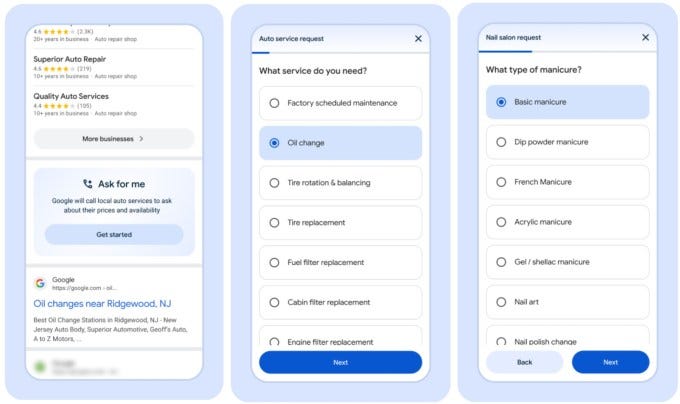Google’s AI-Powered Phone Call Features – The Future of Customer Service?
Discover how Google’s AI-driven phone call innovations, like Duplex and Hold for Me, are reshaping customer service. Are these tools the future of business-client interactions? Dive in to find out!

Introduction: The Rise of AI in Customer Interactions
Imagine a world where waiting on hold for customer support is a relic of the past, where booking appointments happens seamlessly through a natural-sounding AI, and businesses never miss a call. This isn’t science fiction—it’s the reality Google is building with its AI-powered phone call features. From Google Duplex to Hold for Me and Call Screen, the tech giant is redefining how businesses and customers communicate. But does this mark the dawn of a new era in customer service? Let’s explore.
What Are Google’s AI Phone Call Features?
Google has rolled out several groundbreaking tools that leverage artificial intelligence to automate and enhance phone-based interactions:
Google Duplex:
Launched in 2018, Duplex uses natural language processing (NLP) and machine learning to make phone calls on behalf of users. Whether booking a restaurant reservation or scheduling a haircut, the AI speaks with human-like intonation, pauses, and even handles unexpected questions.
Hold for Me:
Annoyed by endless hold music? This feature lets Google’s AI wait on the line for you, alerting you only when a human representative is ready to talk—saving time and frustration.
Call Screen:
Spam calls meet their match. Call Screen uses AI to answer unknown numbers, transcribe conversations in real time, and filter out unwanted calls.
How Do These Tools Work? The Tech Behind the Magic
Natural Language Processing (NLP):
Enables the AI to understand context, detect nuances, and respond appropriately.
Deep Learning Algorithms:
Allow systems to improve over time by analyzing millions of voice samples and conversations.
Real-Time Transcription:
Converts speech to text instantly, empowering users to read live call content.
This tech isn’t just mimicking humans—it’s learning to solve problems faster and more efficiently than traditional methods.
Why This Could Revolutionize Customer Service
1. 24/7 Availability
AI doesn’t need sleep. Businesses can automate routine tasks like appointment bookings or FAQs, offering round-the-clock support without hiring extra staff.
2. Reduced Wait Times
With Hold for Me, customers avoid wasting hours on hold. For businesses, shorter wait times mean happier clients and higher retention rates.
3. Handling High Call Volumes
AI can manage thousands of simultaneous calls, reducing bottlenecks during peak hours (e.g., holiday sales or product launches).
4. Cost Efficiency
Automating repetitive tasks cuts operational costs, allowing companies to reallocate resources to complex, high-value interactions.
Real-World Applications: Who’s Benefiting?
Restaurants & Small Businesses:
Google Duplex handles reservation calls, freeing staff to focus on in-person service.
Healthcare Providers:
Automate appointment reminders and follow-ups, reducing no-shows.
Customer Support Centers:
AI triages calls, directing urgent issues to human agents.
A 2022 study by PwC found that 54% of consumers prefer AI-driven customer service for quick, simple queries.
Addressing Concerns: Is AI Ready to Replace Humans?
While promising, challenges remain:
Privacy Issues:
Storing call data raises questions about security and compliance (e.g., GDPR).
Job Displacement Fears:
Will AI eliminate customer service roles? Experts argue it will shift jobs toward tech maintenance and complex problem-solving.
The “Uncanny Valley” Effect:
Some users find overly human-like AI unsettling. Transparency about automation is key.
Google emphasizes that these tools are designed to augment human efforts, not replace them.
The Future of Customer Service: A Hybrid Model
The ideal future likely blends AI efficiency with human empathy. For instance:
AI handles routine tasks (e.g., billing inquiries).
Human agents step in for sensitive issues (e.g., complaints, emotional support).
Google’s Contact Center AI already offers this hybrid approach, integrating AI with live agent support.
Conclusion: Embrace the Change
Google’s AI phone call features are undeniably transforming customer service, offering speed, scalability, and convenience. While they won’t eliminate the need for human touch, they’re setting a new standard for efficiency. Businesses that adopt these tools early will gain a competitive edge—but success hinges on balancing automation with authentic human connection.
What do you think? Will AI-powered customer service become the norm, or are there limits to its potential? Share your thoughts below!
FAQs
Have a query? Please check this question and answers
Google Duplex uses advanced NLP and deep learning to adapt to context. While it excels at routine tasks (e.g., bookings), it may defer to humans for highly complex issues. The AI is programmed to recognize uncertainty and may say, “Let me check with my client and call back.
As of 2023, Hold for Me is available in the U.S., Australia, and Canada, with plans for gradual global expansion. Availability depends on regional regulations and language support.
Google states that calls are processed securely, and users can opt to save audio recordings. Data is anonymized and used to improve AI, complying with privacy laws like GDPR.
Most features (Call Screen, Hold for Me) are free for consumers. Businesses pay via Google’s Contact Center AI platform or Workspace integrations.
Restaurants, healthcare (appointment reminders), retail (order tracking), and call centers (call routing) see significant efficiency gains.
Yes. Google offers user-friendly APIs and partnerships with platforms like Google My Business for seamless adoption.
